
Shinsaibashi: The Heartbeat of Osaka's Urban Charm
Discover Shinsaibashi: A bustling blend of shopping, culture, and culinary delights in the heart of Osaka, Japan.
Shinsaibashi, located in the bustling city of Osaka, Japan, is a vibrant neighborhood that seamlessly blends the old with the new. This popular shopping district is renowned for its covered shopping street, Shinsaibashi-suji, which stretches over 600 meters and offers a variety of shops ranging from high-end fashion boutiques to traditional Japanese stores. As you stroll through the arcade, you'll be captivated by the colorful signs, the lively atmosphere, and the sheer diversity of goods on offer. Just a stone's throw away from Shinsaibashi-suji is America-Mura, a trendy area that exudes a youthful and eclectic vibe. Known for its alternative fashion, street art, and quirky cafes, America-Mura is the place to experience Osaka's contemporary culture. The iconic Triangle Park, often filled with street performers and skateboarders, serves as a central hub for this vibrant community. Food enthusiasts will find themselves in paradise in Shinsaibashi. From mouthwatering street food stalls to upscale dining establishments, the neighborhood offers a culinary journey that caters to all tastes. Don't miss out on trying Osaka's famous takoyaki (octopus balls) and okonomiyaki (savory pancakes) at one of the many local eateries. Shinsaibashi is also home to several historical and cultural sites. The nearby Dotonbori area, with its famous neon lights and the iconic Glico Running Man sign, offers a spectacular visual treat, especially at night. For a touch of tranquility amidst the urban hustle, visit the Shitenno-ji Temple, one of Japan's oldest Buddhist temples, located just a short distance away.
Local tips in Shinsaibashi
- Visit Shinsaibashi-suji early in the morning to avoid the crowds and enjoy a more relaxed shopping experience.
- Try the local street food in America-Mura for a taste of Osaka's unique flavors and youthful energy.
- Explore the side streets of Shinsaibashi for hidden gems and lesser-known shops that offer unique items.
- Take a leisurely evening stroll along the Dotonbori Canal to see the famous neon lights in full glory.
- Use public transportation to get around; Shinsaibashi Station is conveniently located and connects you to various parts of Osaka.
Shinsaibashi: The Heartbeat of Osaka's Urban Charm
Shinsaibashi, located in the bustling city of Osaka, Japan, is a vibrant neighborhood that seamlessly blends the old with the new. This popular shopping district is renowned for its covered shopping street, Shinsaibashi-suji, which stretches over 600 meters and offers a variety of shops ranging from high-end fashion boutiques to traditional Japanese stores. As you stroll through the arcade, you'll be captivated by the colorful signs, the lively atmosphere, and the sheer diversity of goods on offer. Just a stone's throw away from Shinsaibashi-suji is America-Mura, a trendy area that exudes a youthful and eclectic vibe. Known for its alternative fashion, street art, and quirky cafes, America-Mura is the place to experience Osaka's contemporary culture. The iconic Triangle Park, often filled with street performers and skateboarders, serves as a central hub for this vibrant community. Food enthusiasts will find themselves in paradise in Shinsaibashi. From mouthwatering street food stalls to upscale dining establishments, the neighborhood offers a culinary journey that caters to all tastes. Don't miss out on trying Osaka's famous takoyaki (octopus balls) and okonomiyaki (savory pancakes) at one of the many local eateries. Shinsaibashi is also home to several historical and cultural sites. The nearby Dotonbori area, with its famous neon lights and the iconic Glico Running Man sign, offers a spectacular visual treat, especially at night. For a touch of tranquility amidst the urban hustle, visit the Shitenno-ji Temple, one of Japan's oldest Buddhist temples, located just a short distance away.
Iconic landmarks you can’t miss
Dotonbori
Experience the vibrant nightlife, delicious street food, and iconic landmarks of Dotonbori, Osaka's most famous entertainment district.
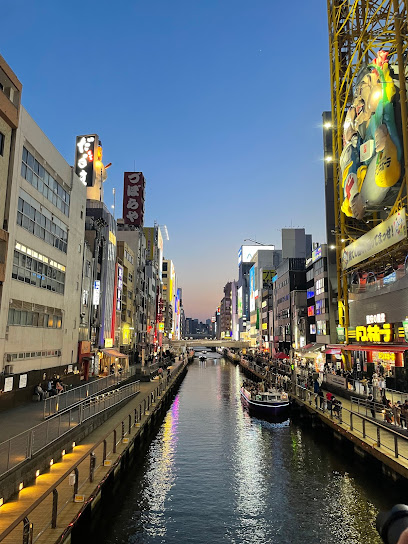
Shinsaibashi-Suji Shopping Street
Explore the lively Shinsaibashi-Suji Shopping Street in Osaka, where modern shopping meets traditional Japanese culture in a vibrant atmosphere.

Dotonbori Glico Sign
Experience the vibrant energy of Osaka at the Dotonbori Glico Sign, an iconic landmark adorned with dazzling lights and surrounded by culinary delights.

Shinsaibashi
Explore the vibrant Shinsaibashi district in Osaka, where history meets modern shopping and delectable street food awaits.
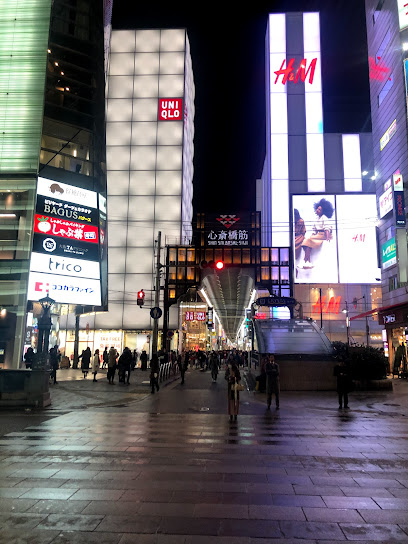
Triangle Park (Sankaku Park)
Explore Triangle Park in Osaka, a tranquil urban oasis filled with lush greenery, art, and a vibrant community atmosphere.
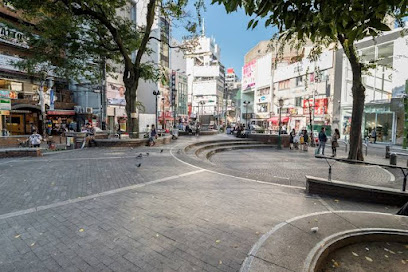
Naniwa-no-Miya-Ato Park (Naniwanomiya Palace Site Park)
Explore the historic Naniwa-no-Miya-Ato Park, the serene site of the ancient Naniwa-no-Miya Palace in the heart of Osaka, where history meets tranquility.
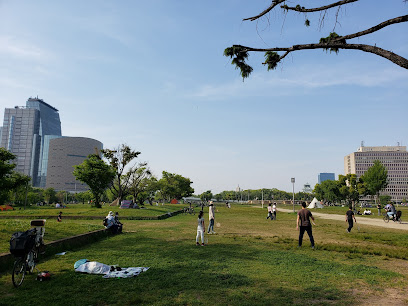
Tombori River walk
Discover the lively Tombori River Walk in Osaka, where stunning views, delectable street food, and vibrant nightlife come together in a unique cultural experience.
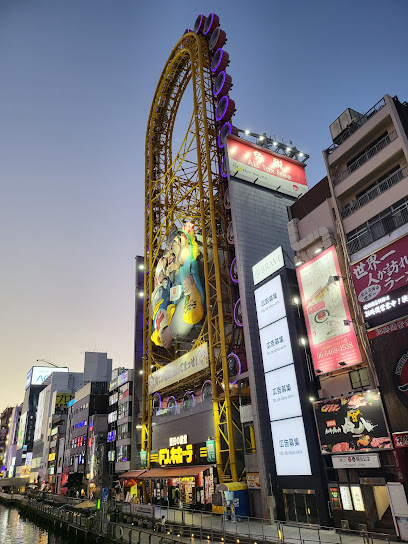
Shinsaibashi Shopping Street Promotion Association
Discover Shinsaibashi Shopping Street in Osaka, a vibrant mix of shopping, dining, and cultural experiences waiting to be explored.
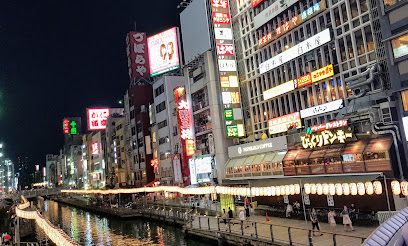
Osaka Convention & Tourism Bureau
Explore Osaka's rich culture and attractions through the Osaka Convention & Tourism Bureau - your ultimate guide to Japan's vibrant city.
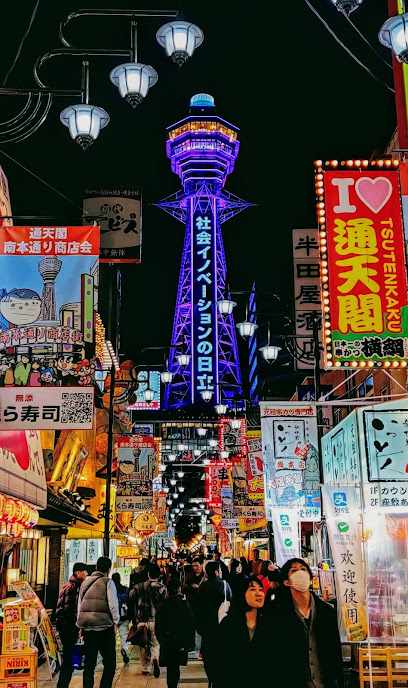
Zyanose-Loveless-EP Rooftop
Discover the enchanting Zyanose-Loveless-EP Rooftop in Osaka, a historical landmark with breathtaking views and a serene atmosphere.
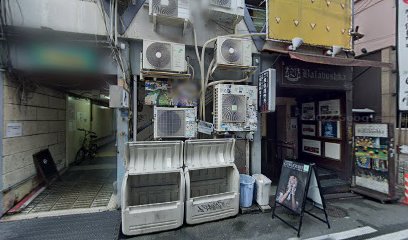
Unmissable attractions to see
Osaka Castle Park
Explore the stunning Osaka Castle Park, a blend of history and nature, surrounding the iconic Osaka Castle in the heart of Japan's vibrant city.
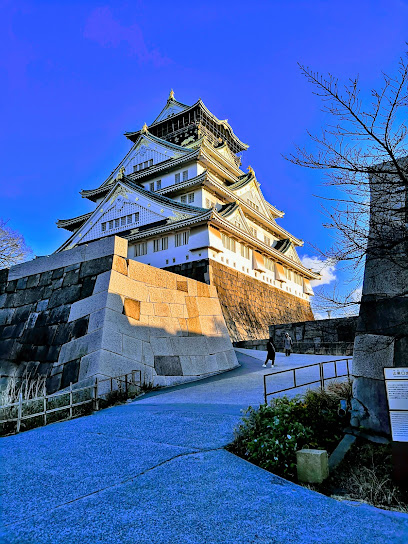
Osaka Castle Main Tower (Osaka Castle Museum)
Explore the historical splendor of Osaka Castle, a magnificent landmark and museum showcasing Japan's rich cultural heritage.
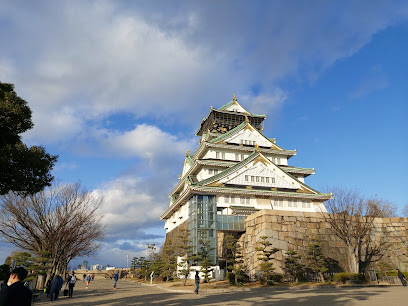
Hozen-ji Temple
Explore the serene beauty of Hozen-ji Temple, a historic Buddhist site nestled in Osaka’s vibrant Namba district, offering tranquility and cultural richness.

Ebisu Tower Ferris Wheel
Discover breathtaking views and a magical experience at the Ebisu Tower Ferris Wheel in Osaka, a must-visit tourist attraction for every traveler.
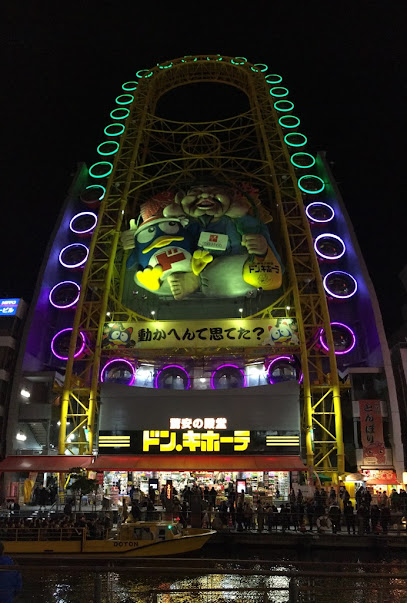
Shinsaibashi
Discover the vibrant blend of history and modernity at Shinsaibashi, Osaka's premier shopping and cultural hub.
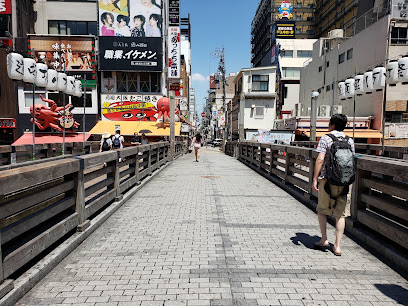
Triangle Park (Sankaku Park)
Experience the charm of Triangle Park, a serene urban oasis in the heart of Osaka, perfect for relaxation, picnics, and cultural exploration.
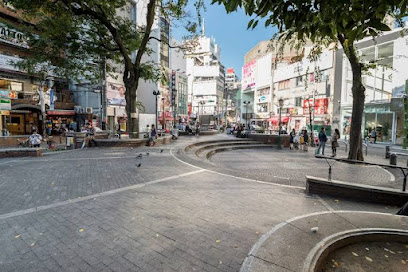
Dotonbori Bridge
Explore the vibrant Dotonbori Bridge, a must-see tourist attraction in Osaka known for its stunning views and delicious street food.
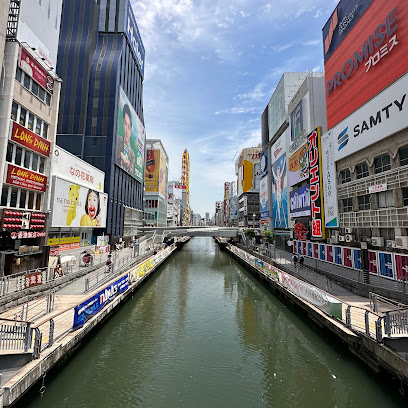
Glico
Discover the sweet side of Osaka at Glico, where iconic snacks and vibrant culture collide in a delightful experience for all travelers.
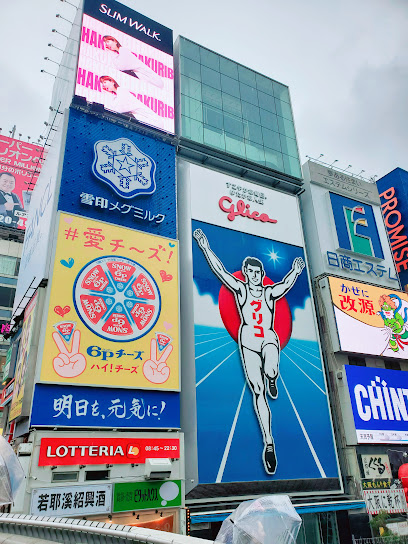
スパイダーマンの館
Discover the vibrant streets of Dotonbori, Osaka's iconic district filled with neon lights, delicious street food, and unforgettable experiences.
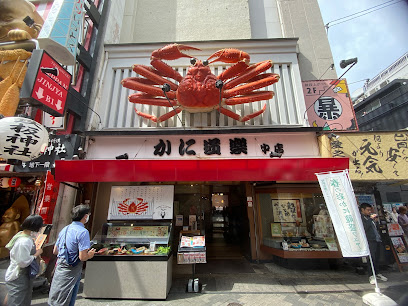
Essential places to dine
Meijiken
Discover the exquisite flavors of Japanized western cuisine at Meijiken in Osaka – where Tonkatsu meets tradition.

Ali's Kitchen Osaka Halal Pakistani & Arabic Restaurant
Savor authentic halal Pakistani and Arabic cuisine at Ali's Kitchen in Osaka - where every meal tells a delicious story.

El Pancho
Experience authentic Mexican cuisine at El Pancho in Osaka's lively Shinsaibashi district – a culinary gem waiting to be explored.
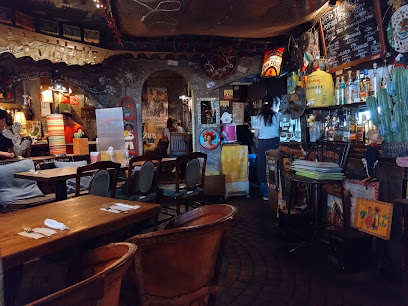
Shabutei Shinsaibashi
Discover authentic shabu shabu dining at Shabutei Shinsaibashi – where fresh ingredients meet vibrant flavors in Osaka's culinary heart.
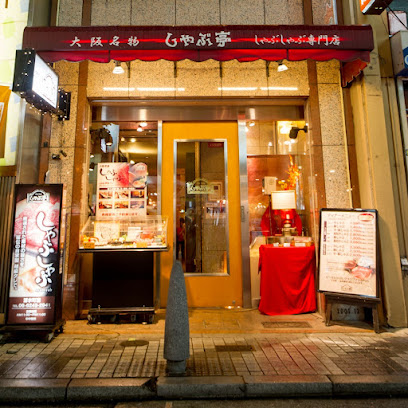
Kobe Beef “Steakhouse Kozai”
Experience the rich flavors of authentic Kobe beef at Steakhouse Kozai in Osaka—where tradition meets culinary excellence.
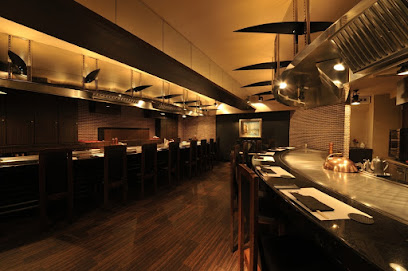
JOJOEN
Savor the finest Yakiniku in Osaka at JOJOEN - where tradition meets luxury in every bite.
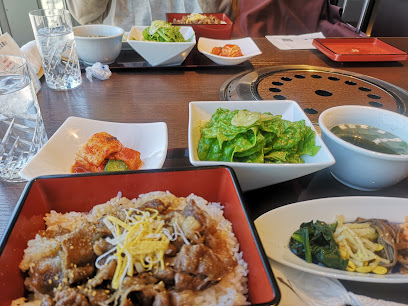
Shinsaibashi Zen-en
Experience exquisite Kaiseki cuisine at Shinsaibashi Zen-en in Osaka - where tradition meets culinary artistry.

Charcoal Grilled Feast Meat Bar Pitari Shinsaibashi
Experience the best of charcoal-grilled meats and modern izakaya dining at Charcoal Grilled Feast Meat Bar Pitari in Osaka's Shinsaibashi.
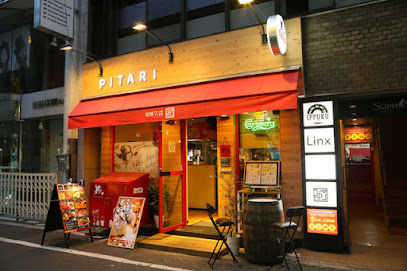
Riverside Izakaya
Discover the essence of Japanese cuisine at Riverside Izakaya in Osaka's lively Souemoncho district, offering traditional dishes in a cozy atmosphere.
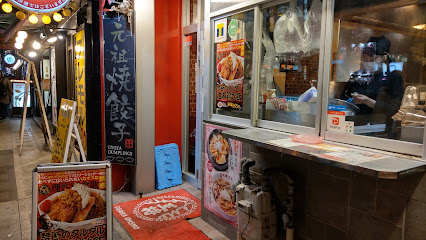
スパイスカレーオオサカ Shall We Spice Produced By 王様のスプーン
Discover the exquisite blend of Western flavors at スパイスカレーオオサカ Shall We Spice, where every dish tells a story.
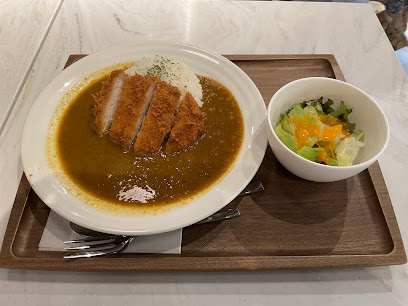
Markets, malls and hidden boutiques
Shinsaibashi-Suji Shopping Street
Explore the bustling Shinsaibashi-Suji Shopping Street in Osaka, a vibrant hub filled with fashion, food, and unforgettable cultural experiences.
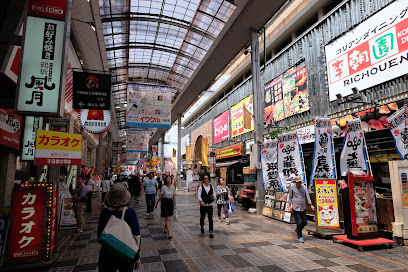
Daimaru Shinsaibashi
Explore Daimaru Shinsaibashi in Osaka for luxury shopping, exquisite dining, and a vibrant cultural experience all in one location.

Hands Shinsaibashi Store
Explore the vibrant and diverse shopping experience at Hands Shinsaibashi Store, a treasure trove for tourists in the heart of Osaka.
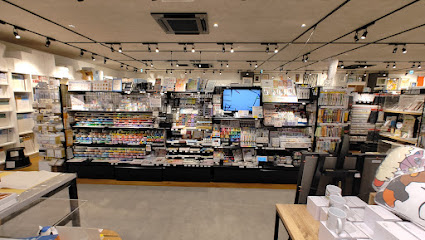
The Roasters Coffee Shinsaibashi
Discover the rich world of coffee at The Roasters Coffee Shinsaibashi, where every cup tells a story and every sip is a delight.

Godzilla Store Osaka
Explore the fascinating world of Godzilla at the Godzilla Store Osaka, a treasure trove for collectors and fans of Japanese pop culture.

BOSS Store Osaka
Discover luxury fashion at BOSS Store Osaka, offering a wide range of stylish clothing and accessories for both men and women.

Object Osaka store
Explore the vibrant Object Osaka Store for unique souvenirs and local craftsmanship in the heart of Osaka's Nishishinsaibashi district.

MoMA Design Store Shinsaibashi
Explore the MoMA Design Store Shinsaibashi in Osaka for an unforgettable collection of modern art and design treasures.

아크네 오사카
Discover the stylish charm of 아크네 오사카, a premier shopping destination in the heart of Osaka's vibrant Shinsaibashi district.
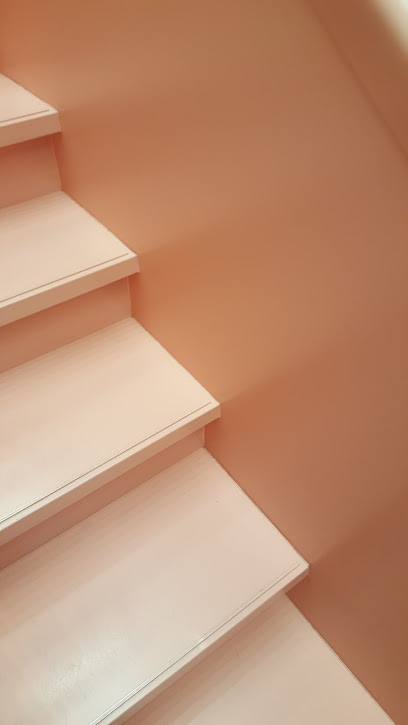
Laox
Discover Laox, Osaka's premier duty-free shopping destination, featuring beauty, electronics, fashion, and unique souvenirs in the heart of the city.
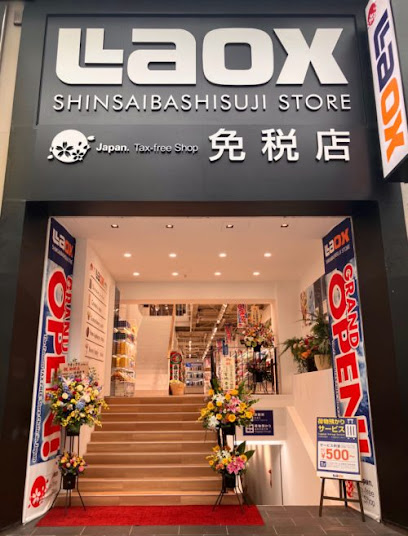
Essential bars & hidden hideouts
The Blarney Stone Shinsaibashi
Discover the vibrant Irish pub culture at The Blarney Stone Shinsaibashi, where authentic cuisine and lively entertainment await in Osaka.
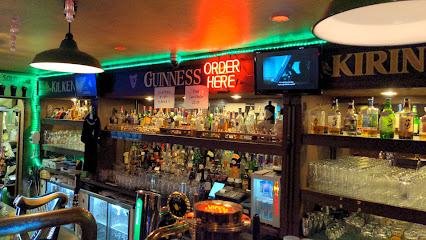
HUB Shinsaibashi
Discover the lively essence of Osaka at HUB Shinsaibashi, where great food and vibrant atmosphere meet.
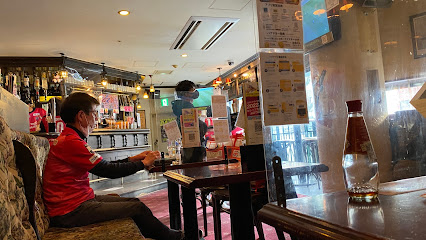
Bar Masuda
Experience the vibrant nightlife of Osaka at Bar Masuda, where expertly crafted drinks and a cozy atmosphere await.
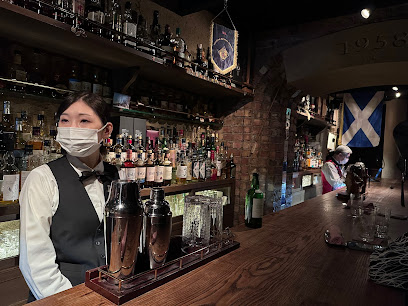
Osaka Cocktail Library Akashic Records
Experience a cocktail adventure at Osaka Cocktail Library Akashic Records, where creativity meets quality in a stylish setting.
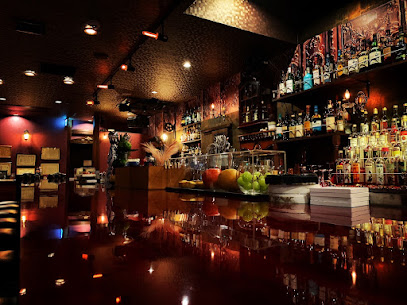
Zerro
Experience the vibrant nightlife of Osaka at Zerro, a bar renowned for its innovative cocktails and welcoming atmosphere.
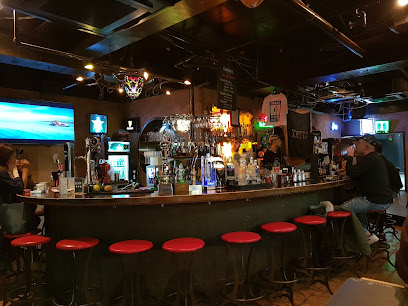
Bar Green Spot
Discover Osaka's vibrant nightlife at Bar Green Spot, where expertly crafted cocktails and a lively atmosphere await every visitor.

Bar Fun
Explore nightlife at Bar Fun in Dotonbori, Osaka - vibrant drinks, lively atmosphere, and unforgettable experiences await.
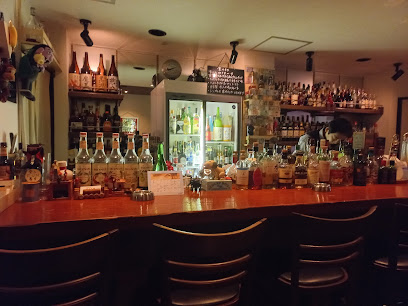
Seven House
Discover the lively atmosphere of Seven House in Osaka, where modern izakaya meets karaoke for an unforgettable night out.
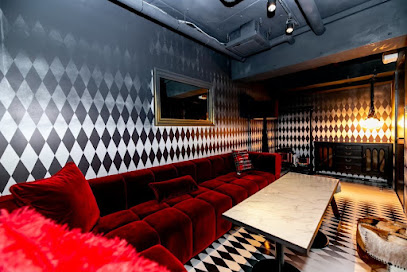
Bros Bar
Discover Bros Bar in Osaka, where creative cocktails and a vibrant atmosphere come together to create an unforgettable nightlife experience.
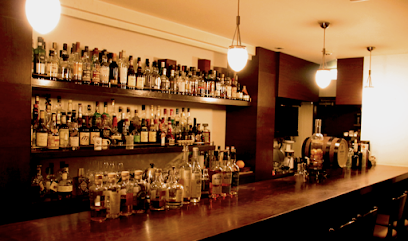
BAR GROTTO 洞窟バー グロット
Experience the enchanting cave-like ambiance of BAR GROTTO, a must-visit bar in Osaka offering a diverse selection of drinks and late-night vibes.

Local Phrases
-
- Helloこんにちは
[kon-ni-chi-wa] - Goodbyeさようなら
[sa-yo-u-na-ra] - Yesはい
[ha-i] - Noいいえ
[i-i-e] - Please/You're welcomeどうぞ
[do-u-zo] - Thank youありがとうございます
[a-ri-ga-to-u go-za-i-ma-su] - Excuse me/Sorryすみません
[su-mi-ma-se-n] - How are you?元気ですか?
[ge-n-ki de-su ka?] - Fine. And you?元気です。あなたは?
[ge-n-ki de-su. a-na-ta wa?] - Do you speak English?英語を話せますか?
[e-i-go o ha-na-se-ma-su ka?] - I don't understandわかりません
[wa-ka-ri-ma-se-n]
- Helloこんにちは
-
- I'd like to see the menu, pleaseメニューを見せていただきたいです
[me-n-yu-u o mi-se-te i-ta-da-ki-ta-i de-su] - I don't eat meat肉は食べません
[ni-ku wa ta-be-ma-se-n] - Cheers!乾杯!
[ka-n-pa-i!] - I would like to pay, pleaseお会計をお願いします
[o-kai-kei o o-ne-ga-i shi-ma-su]
- I'd like to see the menu, pleaseメニューを見せていただきたいです
-
- Help!助けて!
[ta-su-ke-te!] - Go away!行って!
[i-t-te!] - Call the Police!警察を呼んで!
[ke-i-sa-tsu o yo-n-de!] - Call a doctor!医者を呼んで!
[i-sha o yo-n-de!] - I'm lost迷子です
[ma-i-go de-su] - I'm ill病気です
[byo-u-ki de-su]
- Help!助けて!
-
- I'd like to buy...買いたいです...
[ka-i-ta-i de-su...] - I'm just looking見てるだけです
[mi-te-ru da-ke de-su] - How much is it?いくらですか?
[i-ku-ra de-su ka?] - That's too expensive高すぎます
[ta-ka-su-gi-ma-su] - Can you lower the price?値引きしてもらえますか?
[ne-bi-ki shi-te mo-ra-e-ma-su ka?]
- I'd like to buy...買いたいです...
-
- What time is it?今何時ですか?
[i-ma na-n-ji de-su ka?] - It's one o'clock一時です
[i-chi-ji de-su] - Half past (10)10時半です
[ju-u-ji ha-n de-su] - Morning朝
[a-sa] - Afternoon午後
[go-go] - Evening夕方
[yu-u-ga-ta] - Yesterday昨日
[ki-no-u-ta] - Today今日
[kyo-u] - Tomorrow明日
[a-shi-ta] - 1一
[i-chi] - 2二
[ni] - 3三
[sa-n] - 4四
[shi] - 5五
[go] - 6六
[ro-ku] - 7七
[na-na] - 8八
[ha-chi] - 9九
[ku] - 10十
[ju-u]
- What time is it?今何時ですか?
-
- Where's a/the...?...はどこですか?
[...wa do-ko de-su ka?] - What's the address?住所は何ですか?
[ju-u-sho wa na-n de-su ka?] - Can you show me (on the map)?(地図で)見せてもらえますか?
[(chi-zu de) mi-se-te mo-ra-e-ma-su ka?] - When's the next (bus)?次はいつですか?
[tsu-gi wa i-tsu de-su ka?] - A ticket (to ....)(...)までの切符
[(...) ma-de no ki-ppu]
- Where's a/the...?...はどこですか?
History of Shinsaibashi
-
Shinsaibashi's history dates back to the early Edo period (1603-1868), originally serving as a merchant district. Its name, meaning 'Shinsaibashi' or 'New Bridge,' references a bridge that spanned the Dotonbori River, facilitating trade and commerce. This area quickly became a hub for merchants, artisans, and traders, solidifying its importance in Osaka's economy.
-
In the late 19th century, Shinsaibashi began to evolve into a shopping district, with the establishment of the Shinsaibashi-suji shopping arcade in 1928. This arcade, one of the oldest in Japan, offered a variety of goods and services, becoming a central location for both local residents and tourists. Its architecture reflects the era’s design sensibilities and continues to attract visitors today.
-
Throughout the 20th century, Shinsaibashi became a melting pot of cultures, reflecting Osaka's diverse population. The area witnessed the arrival of various cultural influences, especially during the post-World War II economic boom when Western fashion and lifestyle began to permeate Japanese society. This laid the groundwork for Shinsaibashi to emerge as a trendy area for youth culture and fashion.
-
In the 1980s and 1990s, Shinsaibashi underwent significant urban development. The introduction of modern commercial facilities and the expansion of the shopping arcade transformed the landscape. The area became synonymous with luxury brands and high-end retail, attracting shoppers from across Japan and around the world, further cementing its status as a premier shopping destination.
-
Today, Shinsaibashi is characterized by a vibrant mix of traditional and modern influences. While the shopping arcade remains a focal point, the area also features modern skyscrapers and international brands. Cultural events, festivals, and art exhibitions continue to thrive, ensuring that Shinsaibashi retains its historical significance while embracing contemporary trends. The neighborhood is a testament to Osaka's enduring spirit and adaptability.
Shinsaibashi Essentials
-
Shinsaibashi is easily accessible from various neighbourhoods in Osaka. The closest subway station is Shinsaibashi Station on the Midosuji Line, which connects directly to Namba, Umeda, and Shin-Osaka. If you are coming from Kansai International Airport, you can take the Nankai Airport Line to Namba Station, then transfer to the Midosuji Line to reach Shinsaibashi. Alternatively, local buses and taxis are available and convenient for direct travel.
-
Shinsaibashi is well-connected by public transport. The Osaka Metro is the most efficient way to navigate the area, with Shinsaibashi Station serving as a hub. Bicycles can also be rented from various rental shops or bike-sharing services. Walking is a great option as well, especially along the famous shopping arcade, Shinsaibashi-suji, where you can explore shops, cafes, and local attractions.
-
Shinsaibashi is generally a safe area for tourists. However, like any urban setting, it is wise to remain vigilant, particularly in crowded places. While there are no specific high-crime areas targeting tourists, petty crimes such as pickpocketing can occur. Avoid walking alone late at night in less crowded streets and be mindful of your belongings.
-
In case of an emergency, dial 110 for police assistance or 119 for fire and medical emergencies in Japan. Familiarize yourself with the location of the nearest police station and hospital. Many pharmacies offer basic medical supplies, and it is advisable to have travel insurance that covers health emergencies. English-speaking services may be limited, so having a translation app can be helpful.
-
Fashion: Do dress modestly when visiting shrines or temples. Don't wear overly casual attire, especially in upscale dining areas. Religion: Do respect local customs at religious sites, including bowing when entering. Don't take photos in restricted areas. Public Transport: Do be courteous, giving up your seat to the elderly. Don't eat or drink on public transport. Greetings: Do greet with a slight bow, as a sign of respect. Don't shake hands unless initiated. Eating & Drinking: Do try local dishes and be open to sharing food. Don't waste food, as it is considered disrespectful.
-
To experience Shinsaibashi like a local, explore the hidden cafes and boutique shops in the side streets off the main shopping arcade. Participate in seasonal festivals and events, which often feature traditional performances. Engage with local vendors at the Shinsaibashi-suji shopping street and sample street food delicacies. Lastly, try visiting during the evening when the neon lights bring a vibrant atmosphere to the area.
Trending Landmarks in Shinsaibashi
Nearby Cities to Shinsaibashi
-
Things To Do in Nara
-
Things To Do in Kyoto
-
Things To Do in Nagoya
-
Things To Do in Kanazawa
-
Things To Do in Hiroshima
-
Things To Do in Tokyo
-
Things To Do in Fukuoka
-
Things To Do in Ulsan
-
Things To Do in Gyeongju
-
Things To Do in Pohang
-
Things To Do in Busan
-
Things To Do in Daegu
-
Things To Do in Andong
-
Things To Do in Suncheon
-
Things To Do in Daejeon








